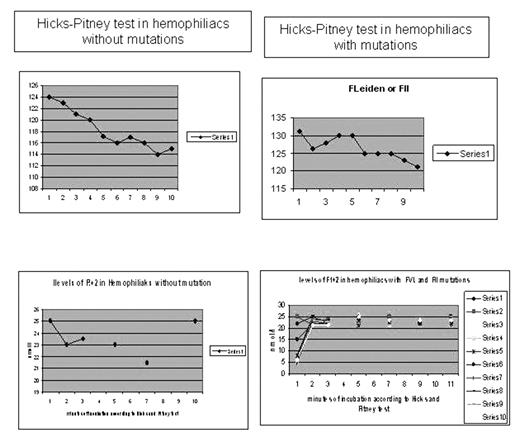Abstract
It has been seen that a significant number of hemophiliacs show a co-existence of mutations related with an increased risk of thrombosis (Foka et al 2003). It has also been suggested that the existence of these genetic defects that manifestate with either hemorrhage or thrombosis, may actually protect these patients from recurrent bleeding episodes. In order to study the coagulation mechanism in these patients the Hicks & Pitney test was selected, that examines the generation of prothrombinase. Materials and Methods. 64 subjects were studied (56 hemophiliacs 42±15 year old and 8 normal subjects 45±10 year old). 37 without mutations, and 19 others with mutations (12 with FVLeiden and FII G20210A and 7 homozygotes in MTHFR). The test was applied to 2 groups (one with hemophiliacs and one with normal subjects). The levels of F1+2 and TAT were also measured in every incubation phase, as markers of the generation of prothrombinase and thrombin.
It can be seen in the charts that follow that hemophiliacs with no mutations show a gradual prothrombinase generation. On the contrary, hemophiliacs with mutations show a rapid generation that is also expressed by the concomitant increase in the levels of F1+2 and TAT. A similar response was observed in the group of normal subjects.
This can be explained as an adjustion of the coagulation mechanism of hemophiliacs with coexistence of thrombophilic mutations, possibly capable of preventing the high frequency and severity of bleeding episodes.
Author notes
Corresponding author



This feature is available to Subscribers Only
Sign In or Create an Account Close Modal